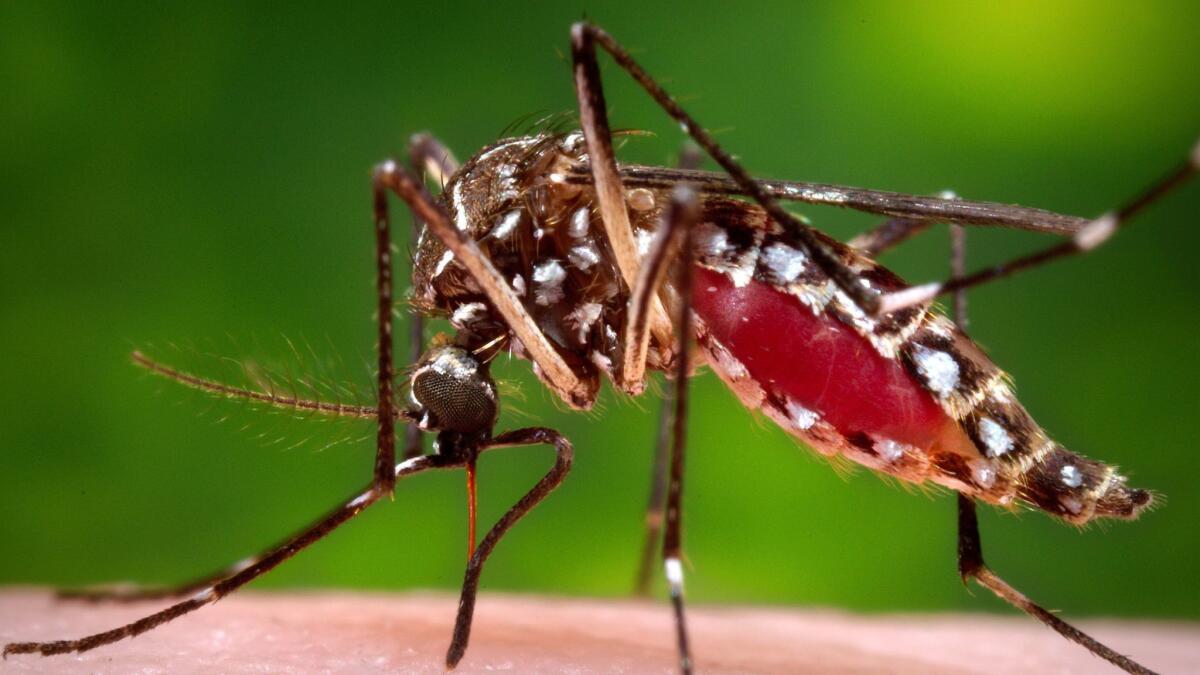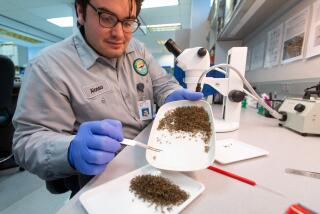Texas becomes second state to confirm locally transmitted Zika infection

- Share via
Texas reported a locally transmitted case of the Zika virus on Monday, making it the second U.S. state believed to have mosquitoes that spread the disease.
Lab tests confirmed last week that a woman who lives in Brownsville, Texas, was infected with the virus, state health officials said in a statement.
The woman had not recently traveled to Mexico or any other region with an ongoing Zika outbreak. The statement also said she was not pregnant, a significant detail because infection during pregnancy can lead to serious brain defects in fetuses.
The virus was detected in her urine but a blood test was negative, “indicating that the virus can no longer be spread from her by a mosquito,” the statement said.
Zika virus spreads to people primarily through the bite of an infected Aedes aegypti species mosquito but can also spread during sex by a person infected with Zika to his or her partner, according to the U.S. Centers for Disease Control and Prevention.
The virus has swept through several Latin American countries over the last year, including Brazil, Colombia and Honduras.
In July, authorities announced four cases in which mosquitoes in Florida had transmitted the virus, the first such instances in the continental United States. Puerto Rico has reported 31,944 locally contracted cases of Zika to the CDC.
Chris Van Deusen, a spokesman for the Texas Department of State Health Services, said there was no indication that the Texas patient had contracted the virus through sexual transmission, meaning that mosquitoes were almost certainly the culprit.
“We certainly have been preparing for this since getting reports of the virus out of South America,” he said. “This is something we have been planning for and have been expecting to see for some time. It was a matter of when, and not a matter of if.”
Van Deusen said there were no other cases of suspected local transmission. Unlike in some of the developing countries where Zika is ongoing, the extensive use of air conditioners and window screens, among other factors, would probably prevent the virus from becoming widespread in Texas, he said.
Texas health authorities are working with the CDC to pinpoint how and where the infection occurred. Van Deusen said an environmental assessment had been conducted at the patient’s home and mosquitoes were being trapped and tested.
Health workers would also be going door-to-door in the patient’s neighborhood to collect urine samples in a search for other infections, he said. They would also help people to detect and minimize potential mosquito breeding sites on their property.
“Texas is doing the right thing by increasing local surveillance and trapping and testing mosquitoes in the Brownsville area,” CDC Director Thomas Frieden said in a statement.
No vaccines or treatments are available to treat or prevent Zika infections. As of Nov. 23, a total of 4,444 infections, including more than 1,000 in pregnant women, had been reported to the CDC from U.S. states. Of those, 182 were the result of local spread by mosquitoes, the agency said.
Van Deusen encouraged Cameron County, Texas, residents to take precautions such as using insect repellent, wearing long pants and long-sleeved shirts to cover exposed skin and removing standing water in and around homes.
“People need to be aware and vigilant,” he said. “But there is no need to panic.”
For more on global development news, see our Global Development Watch page, and follow me @AMSimmons1 on Twitter
More to Read
Sign up for Essential California
The most important California stories and recommendations in your inbox every morning.
You may occasionally receive promotional content from the Los Angeles Times.











